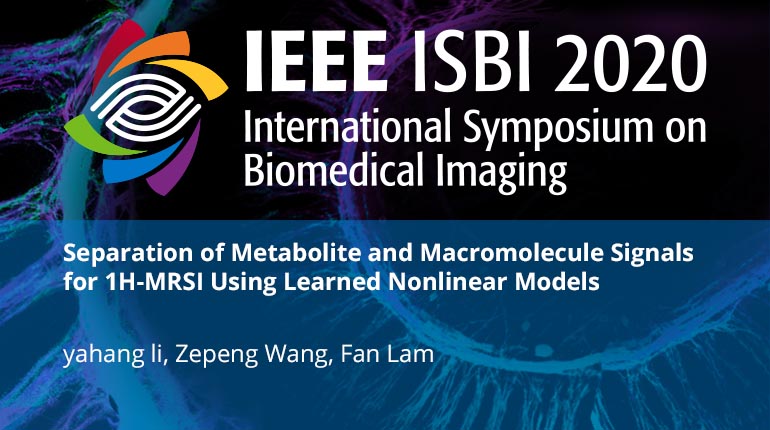
Already purchased this program?
Login to View
This video program is a part of the Premium package:
Separation of Metabolite and Macromolecule Signals for 1H-MRSI Using Learned Nonlinear Models
- IEEE MemberUS $11.00
- Society MemberUS $0.00
- IEEE Student MemberUS $11.00
- Non-IEEE MemberUS $15.00
Separation of Metabolite and Macromolecule Signals for 1H-MRSI Using Learned Nonlinear Models
This paper presents a novel method to reconstruct and separate metabolite and macromolecule (MM) signals in 1H magnetic resonance spectroscopic imaging (MRSI) data using learned nonlinear models. Specifically, deep autoencoder (DAE) networks were constructed and trained to learn the nonlinear low-dimensional manifolds, where the metabolite and MM signals reside individually. A regularized reconstruction formulation is proposed to integrate the learned models with signal encoding model to reconstruct and separate the metabolite and MM components. An efficient algorithm was developed to solve the associated optimization problem. The performance of the proposed method has been evaluated using simulation and experimental 1H-MRSI data. Efficient low-dimensional signal representation of the learned models and improved metabolite/MM separation over the standard parametric fitting based approach have been demonstrated.
This paper presents a novel method to reconstruct and separate metabolite and macromolecule (MM) signals in 1H magnetic resonance spectroscopic imaging (MRSI) data using learned nonlinear models. Specifically, deep autoencoder (DAE) networks were constructed and trained to learn the nonlinear low-dimensional manifolds, where the metabolite and MM signals reside individually. A regularized reconstruction formulation is proposed to integrate the learned models with signal encoding model to reconstruct and separate the metabolite and MM components. An efficient algorithm was developed to solve the associated optimization problem. The performance of the proposed method has been evaluated using simulation and experimental 1H-MRSI data. Efficient low-dimensional signal representation of the learned models and improved metabolite/MM separation over the standard parametric fitting based approach have been demonstrated.
 Cart
Cart Create Account
Create Account Sign In
Sign In





